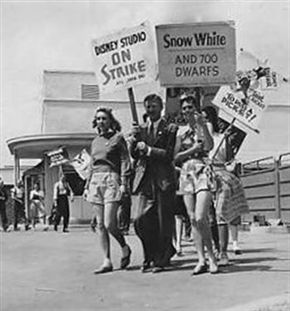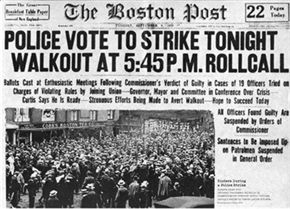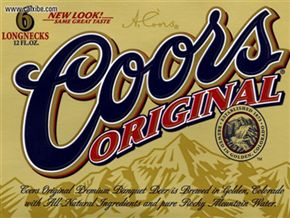1. Play-Doh

Image Source
The story of Play-Doh started in 1927 when a dying Cincinnati soap company tried to revitalize its business by creating an innovative new product. Play-Doh was a compound of various non-toxic chemicals meant to clean coal soot off walls. This was a serious problem as most household had coal fireplaces and the only way to clean wallpaper was with a home-made mixture of dough and baking soda. The Play-Doh company took a serious risk, using all its funds in order to create a product that could be used to clean the walls. What follows is a tale of hard work and unbelievable success against seemingly unbeatable odds. Within only a few years Play-Doh was the number one choice for cleaning wallpaper and was selling thousands of cans.
However, after the Second World War coal fireplaces fell out of use and Play-Doh was seeing its business rapidly shrink. A great success story looked like it was about to end abruptly, when the wife of the company manager read an article about children making decorations from wallpaper cleaner. With the company on the brink of bankruptcy once more, the owners took another great risk, rebranding the old wall cleaner into a children’s toy.
The rest, as they say, is history, and remember that if you ever need to clean coal soot off you wall you can just use Play-Doh.
2. Kites

Image Source
When we think of kites we imagine a fun summer day and lots of fun, however kites have a long history of being used in warfare. It is believed that the first kites were invented in 1000BC in China where they signaled the position of troops back to strategists. An alternative theory suggests that kites were used to send orders to the generals in the fields and the tails and colors were often changed in order to confuse any enemy who would try to break the code.
During the 200’s BC we know that kites were also used as a way of scaring and confusing enemy troops; bamboo was tied to the kite, making a horrible noise as it fell from the sky. Romans and Greeks used kites in order to experiment and it is believed that in Japan kites were seen as religious symbols.
Kites continued to be used in experiments and became popular as children’s toys only in the late 12th century. However, the children’s kite was usually much smaller and had holes made in it so that it would “whistle.” It is believed that only after the civil war in the U.S. the kite became really popular as a toy, being associated with picnics and weekend excursions.
3. Slinky

Image Source
During the 1940’s Richard James was a naval mechanical engineer working on a method to stabilize delicate marine equipment during rough seas. The ideal method to accomplish this was by creating a new metal alloy that could be shaped like a coil in order to absorb pressure but also be able to stretch if necessary. While this might not sound like an impressive feat, but it took Richard James two years to find the right combination of steel and the right tightens.
Once he identified the right compound, Richard spent time trying to find the perfect shape. It was during this stage of the research that he accidentally dropped a metal coil and noticed that it just kept going from one step to the other, effectively “walking.”
Motivated by his wife’s encouragements he developed the “Slinky” and started selling it worldwide. The toy was incredibly popular because it could be used in schools to prove the wave theory. It was also used in Vietnam in lieu of radio antennas and the Slinky has even traveled into outer space where NASA used it in physics experiments.
4. Silly Putty

Image Source
Originally named Nutty Putty this toy was invented during the Second World War as a potential replacement for rubber. Japan had invaded many rubber producing countries and the need for new sources of rubber prompted a true race for a synthetic replacement. However, it is uncertain who exactly invented Silly Putty.
All that is known for sure is that by 1943 there was a patent on the peculiar substance that could bounce, stretch, rip and would not collect mold or melt.
Unfortunately, despite its incredible properties no one could think of any usage for Silly Putty. The material simply didn’t have the properties needed to replace rubber, or serve any other important function. The material might have been forgotten were it not for a toy store owner who decided to pack it in clear containers and sell it for only $1.
Nowadays, Silly Putty is used in various fields, including medicine where therapists use it to re-activate muscle and help patients reduce their stress levels. Silly Putty was even used in space as a method of securing tools on Apollo missions.
5. Rubik’s Cube

Image Source
The famous 3D puzzle was invented in 1974 by Hungarian sculptor and professor of architecture Ernő Rubik in order to help his students understand complex shapes. The cube became very popular in a short period of time as it was the only mechanical puzzle of its time. However, the cube is not really a toy meant for children.
There are approximately forty-three quintillion permutations of the cube, a number that simply forces the person attempting to solve the cube to design an algorithm. This means that the cube cannot be solved unless the person is using a pre-determined pattern which allows for elimination of a great number of possible options. In other words a Rubik’s Cube is an incredible tool for teaching logic and expanding the way one sees number theory.
6. Plasma Globe

Image Source
This toy has its roots in a 1891 invention made by Nikola Tesla. The Tesla coil was supposed to be used as a method of transporting electricity without cables. Tesla used two coils which were tuned at the same frequency in order to have mid to high voltage transfer from one to the other. He believed that this could be efficiently used in order to replace the more traditional cable electric network.
In fact Tesla worked for many years on a wireless electric grid that would use the Earth’s natural frequencies in order to transport electricity anywhere in the world.
Aside from such grandiose plans the Tesla coil was also used in radios, electrotherapy and even in medicine where it could create a sort of basic X-ray. However, the practical usage of Tesla coils declined as high voltage was considered too dangerous and cables became very cheap and easy to use.
Nowadays the most common usage of a Tesla Coil is in entertainment where they were transformed by Bill Parker into Plasma Globes. The Globe is filled with various gasses which become colored when high voltage current is emitted. While quite beautiful, this toy is not even close to the great vision Tesla had for his electrical coil.
Author: Jack Mendoza — Copyrighted © roadtickle.com





























